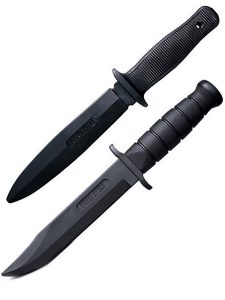A Duty To Act: Understanding Police Decisions
© Copyright 2017, tim boehlert

Remembering the sacrifice of one…
“In a free and peaceful society where so many have been taught that all violence is wrong, citizens are often confused and dismayed when officers use force, even when the force is perfectly lawful and justified.”
Force Decisions: A Citizen’s Guide to Understanding How Police Determine Appropriate Use of Force, Rory Miller
Because this class was a whirlwind of information that requires deeper research, I will highlight the main points that were provided, describe them in brief as I understood them, and at the end I will provide resource links that I was able to find to enable you to do the deeper research that will help you try to fully comprehend the connections and relevance of the subject matter that we were exposed to.
The majority of the information of the first two days was based on law and case law. We need to understand the existing laws and case law presented here in order to frame our understanding going forward and to truly and effectively see that ‘what we think we are seeing’ is no longer based on our lack of this foundational knowledge.
Background:
In 2012, Rory Miller published a book titled: Force Decisions: A Citizen’s Guide to Understanding How Police Determine Appropriate Use of Force https://www.amazon.com/Force-Decisions-Understanding-Determine-Appropriate/dp/1594392439/ref=asap_bc?ie=UTF8
This book was written well before the more recent events that have dominated our headlines for the last 2+ years.
I had found Rory and his work through my search for answers to some very difficult personal questions that I wanted answered and for situations that I’d likely face daily: “How do I deal with violence.” It’s seemingly a pretty simple question. As I was to find out though, there were many answers, a lot of opinions, and unfortunately a lot of bad information out there all geared towards answering that simple question.
Over the last 2-3 years, policing and police work have been the focus of so much negative media attention that I felt it needed to be exposed. The outright deceitful practice of so many media outlets to paint our warriors in the wrong light touched home for me personally. No one denies that there are bad events in police work. No one denies that there are bad cops. No one denies that the results are often difficult to deal with, from every side, well… almost.
In over 8 years of doing security work I’ve had the pleasure of working with many officers from multiple regional agencies – Marshals, State Troopers, Sheriffs and other local Police Departments. They all do one thing extremely well. They show up each workday to offer their expertise, and their lives to protect people they do not know – you, your neighbors, and your families. Not because it is their job, although it is, but because they want to make a difference.
During many years of dealing with individuals that I had come in contact with and/or that had come to the attention of our police agencies, I found enlightenment on a whole new level. I have gained a newfound understanding that few will ever be privy to, and a newfound knowledge, as to what they deal with many days. Incidents where our officers are asked and expected to address without personal bias, without concern for their own personal well-being, and with the expectation that they will prevail. There is no second-place in their world. These fine women and men run in where others are running out. They respond to things that many will never face, and some outright can’t.
We all expect to go home safe after work and lead our lives, with no question, we consider it a given. Our police officers are duty bound to do the same. That is their goal, each and every day. But, the difference is that it is more of a conscious decision, and not an expectation for them. I expect that every day this weighs heavily on their mind: “will I make it home safe and alive… today?”
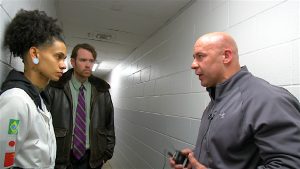
The Syracuse Regional Academy Civilian Police Academy:
Syracuse Police Announce a 10-Hour Civilian Police Academy To Be Held January 10-12, 2017 at the Public Safety Building.
In the wake of several well-publicized police-citizen encounters, Syracuse Police Chief Frank Fowler has decided to host a free event designed to improve the relationship between local police and the community members they serve.
The Syracuse Police Department will be hosting a Civilian Police Academy, January 10-12th, 2017, at the Public Safety Building. The Civilian Police Academy is intended to educate community members about police training and tactics, in an effort to provide them with a better understanding of police authority and the limits on police authority. Experienced police instructors will provide training related to various legal and procedural aspects of policing, including authorized police use of force.
Practical exercises will also be incorporated into the curriculum in an effort to provide participants with an opportunity to put into practice what they have learned. Each of these practical exercises will be recorded by local college and university students and an interactive discussion will follow each exercise. In addition, the instructors will facilitate discussion about some of the recently publicized police use of deadly force incidents that have dominated the news media. Invitations have been extended to a wide range of community members, including church leaders, activists, members and participants of Interfaith Works, media representatives, Syracuse City School District administrators, neighborhood watch groups and members of the Civilian Review Board.
There is no cost to attend the program.
PARTICPANTS ARE REQUIRED TO ATTEND THE FULL SESSIONS ON ALL THREE DAYS.
Facts vs. Beliefs:
Let’s discuss what we think we know vs. what the facts really are. I’m going to share my ‘school’ experience with our local Police Department, whereby this fine agency issued an invitation to the public to attend a very special class – The Civilian Police Academy.
The class centered on the most important foundational legal aspects involved, and some of the tactics developed and deployed to deal with criminals and/or persons in crisis.
DAY 1, Detective Derek McGork:
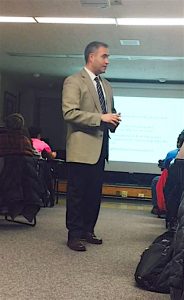
After a short welcoming speech by a few of the officers and the Chief of Police, we were down to the business of opening minds.
Det. Derek McGork spoke briefly about some of the legal issues and laws that are the foundational pieces that support police Use of Force policies. He spoke briefly about other programs that they have implemented in our community: youth outreach programs, community involvement opportunities, community education opportunities, and he ended his presentation with a short talk about the on-going and ever-present violence that surrounds us daily.
The objectives of this class were to:
1) Foster cooperation between police and those in attendance i.e. the community that the police are responsible for and accountable to.
2) To showcase a small portion of the training that all recruits and future law enforcement professionals receive.
3) To dispel misconceptions re: “Why we do what we do.” For the common citizen to understand more fully what they think they see, and perhaps misunderstand or misinterpret based on limited knowledge, personal/community bias, etc.
4) To create neighborhood ambassadors. To educate the attendees that stepped up to this opportunity and challenge to become educated, and with the expectations that we would in turn go forth and educate those that we are involved with, beholden to, or directly or indirectly responsible for.
This class would not be complete without a discussion pertaining to those “inflammatory ‘experts’ within the media.” The floor was opened for a volley of comments and some discussion – to set the groundwork for what was to come What ensued never felt rehearsed. The answers provided were informative, positive and sincere, never negative.
Citizen Encounters:
During this segment lots of new police-speak was presented. For me it was a bit overwhelming. When I learn, I need time to process what is being presented. Time was short. We would be taught in 10 hours just some of the material that new police recruits would have 6 months to learn.
[POINT 01] “Under a certain set of circumstances, police have the authority to question, detain, search or arrest individuals (within reason).” – also known amongst officers as an ‘investigative action.’
This statement provides certain and specific protections for police officers in performing their duties for the citizens and communities that they represent and protect. It is Federal and NY case law. Their goal: to preserve a safe society and keep crime to a minimum. The issue(s): Individual rights vs. Public order.
A discussion ensued regarding this point and as you might expect, the specific wording and exact definition of the terms and individual words therein. I was aware of legalese, but this fine-tuned for me the importance of not only being able to memorize definitions of law, but to truly understand a ‘simple’ definition steeped in legalese.
Next was a discussion of NYC’s Stop & Frisk law(s). Since this practice has been in the news for the last few years, and its’ relevance was apparent, we had a mini-seminar of specific case-law as it applies to the police’s rights to do so.
“The need to balance the need to maintain a safe society with the need to uphold citizen’s constitutional rights.”
Case Law 1:
The case law was discussed with the details provided, and explained in general to us. A Terry Stop[1] involves detaining a person by police on reasonable suspicion of criminal activity.
[POINT 02] Terry vs. Ohio, 392 U.S. 1 (1968)[2]
In short, the police have to demonstrate articulable facts (reason) that ‘criminal activity is afoot.’
To justify reasonable suspicion, police have to demonstrate specific and articulable facts that indicate to a reasonable officer that the detainee is, or is about to engage in criminal activity. Reasonable suspicion is based on the totality of circumstances, in brief.
Is your head spinning yet?
There are differences between Federal and New York State law, specifically relating to search and seizure. In short, the State has the ability to ‘extend permissions beyond what the Federal Law states.’
One of those is the definition of a ‘high-crime area’ to allow for justification of Stop & Frisk, whereby officers that observe specific behaviors and/or interpersonal communications and/or specific transactions can use this extension to lawfully provide articulable facts.
[POINT 03] People vs. Debour, 40 NY2d 210 (1976)[3]
We learn about a 4-tiered analysis/guideline regarding the rights of police with specific given facts.
[LEVEL 1]
Request for information – The police have the right to request information, and ID based on objective and credible reasoning. They need to be able to justify a stop and be able to articulate why they are asking for your ID, or why you are there.
[LEVEL 2]
Right to inquire – they need to provide justification based on a founded suspicion that criminal activity is afoot.
[LEVEL 3]
Stop & Frisk – Reasonable suspicion that a crime has occurred or is about to occur(?) and that the perpetrator is armed.
[LEVEL 4]
Arrest – based on standard reasonable cause.
Within each level, the police have specific guidelines of what they need to justify, and what they are able to do as a result of that specific levels guidelines. With each level there are more requirements to be followed and increased abilities granted to the officer.
“Police may demand information with no legal recourse.”
Police work under a premise known as ‘Duty To Act.’ It is their job to respond, they have no choice. They cannot refuse, even when and if there life is in danger. They will never have all of the information needed at the time that they have to respond to an encounter, which could result in their death or the death of other citizens.
During ‘custodial interrogation’, the citizen does not have to be Mirandized. Simply put, the police do not have to read you your rights under this type of encounter.
During any stop, the police act on the available information at the time – those facts that are presented to them by the dispatcher, or others that may have incomplete and/or inaccurate information. How about that?
Facts are only facts if they are true, are provided by a credible source, and will vary depending on the depth of the available details provided.
Police officers are asked daily to make decisions based on this premise in a very small and often immeasurable timeframe. When those officers are challenged in a court of law (and or in the court of public opinion – i.e. the media), those that judge the actions of the officers have been afforded the gift of extended/extensive time, further research, perhaps better facts and details or other information not available at the time to the responding officers. In the eyes of the law these same officers are protected by the law, which states that they can only be judged based on the information that was available to them at the time.
[People v Cantor, 36 NY 2d 106, 112-113 (1957)] [4]
At [LEVEL 3], reasonable suspicion is defined as follows:
“The quantum of knowledge to induce an ordinary prudent and cautious man under the circumstances to believe criminal activity is at hand.”
Proceed with caution – you need to understand the legal implications of this sentence in its entirety, and each word individually as well. Often this is the source of disconnect for civilians. It generates angst, misunderstanding and much head shaking when discussed amongst peers not in touch with their legal knowledge base.
Thus, “a stop based on reasonable suspicion will be upheld if the officer can identify specific and articulable facts that, together with any logical deductions, reasonably prompted the intrusion.” (1d@ 113)
Right about now, my head is spinning. Partly because I’m tired, partly because I hate legal-speak or any verbiage that needs to be analyzed with the help of a thesaurus and at least one good dictionary. I can appreciate the exactness of the terms and definitions, but to fully comprehend the meaning takes a lot of extra effort.
Det. McGork next spoke of the need to educate tipsters on how to create a better (i.e. more detailed) description of a person of interest (POI) to affect more arrests.
He next transitioned into a discussion about bias, specifically unconscious bias, citing “Race is not part of the equation.”
Case Law 2:
People v Brown 115 AD3d (1st Dept. 2014[5]
In brief: a case where officers observed two known males running down the street suspiciously (looking back over their shoulders) in a known high-crime area. Although no crime had been reported, they stopped and detained the two men so that they could question them and investigate further.
People v Thomas 115 AD3d (1st Dept. 2014)[6]
In brief: Same as People v Brown 115 AD3d (1st Dept. 2014) Cited above.
People v Chestnut 51 NY2d 14 (1980)[7]
In brief: a case where two plain clothes officers on anticrime patrol observed two males and a female acting suspiciously in a known high-crime area. Although no crime had yet been reported, they followed and observed one of the males into a neighborhood park where they observed further suspicious activity and only then received information of an armed robbery in the area where the male being observed fit the description given by the victim. They continued to follow the male until such time as he had met up with the other two accomplices and then detained them.
These cases led to a ruling in favor of police action where they were reasonably suspicious based on the totality of circumstances citing ‘in the moment’ vs. the privilege of time and research after the fact.
DAY 1, Detective Mark Rusin:

Det. Mark Rusin is a graduate of the 2016 Force Science Institute program, and an expert in the Use of Force as it applies specifically to police use of force against civilians.
He starts his portion of the training by citing a speech given by Attorney General Janet Reno from April 15, 1999 before the National Press Club.
https://www.justice.gov/archive/ag/speeches/1999/04-15-1999b.pdf
Mark then explains that the USDOJ (United States Department of Justice) requires that all officers undergo a minimum of 7 hours in Use of Force training. Locally, Det. Rusin states that the officers from the Syracuse Police Department undergo between 60 & 70 hours of in-service training!
We discussed the concept of ‘fear vs. being offended’ when coming face-to-face with the police. Perception. It’s all about that one little word – perception.
Det. Rusin suggested that we all Google the Harvard study/test on Implicit Bias.
https://implicit.harvard.edu/implicit/takeatest.html
He said we’d likely be surprised by the findings.
A definition of implicit bias: Understood though not clearly or directly stated tendency to believe some ideas are better than others.
We discussed training to a standard and how each community may have very different standards. Det. Rusin wanted to teach people where to look, and which professional cues to pay attention to during any contact.
Verbal Judo came into play with both Det. McGork and Det. Rusin. It seemed obvious to me that their use of verbal judo had been in their training. Det. Rusin pointed out “we’ve all likely heard the term de-escalation right?” And while we may all have heard of it, and some were more familiar with the term and concept than others, there is no standard to follow. Thus any tactics may be implemented, in any order and to any discernible degree that the user determines is useful. So while the public outcry may be for more use of de-escalation tactics, there is no standard to follow, and no real requirements to do so.
What I’ve personally found is that some are better than others, and it is my belief that getting better is attributable to exposure, achievement and an ability to work under pressure and with no existing maps. You are flying by the seat of your pants in unchartered territory. Buckle up and hang on!
We heard about Procedural Justice Ideals and learned that here there is also no standard.
This led to an explanation of Reality Based Training. We also learned the term Human Performance Factors.
[POINT 04] Scott v Harris 550 U.S. 372,(2007)[8]: where the term seizure is defined.
Much of policing is defined by the U.S Constitution’s 4th Amendment.[9] The exact same verbiage that defines the 4th Amendment is also used in NYS Article 1, sec. 12.
Case Law 3: Seizures
Brendlin v California 51 U.S. 249[10]
In brief: all occupants of a vehicle are seized, not just the driver during a traffic stop.
Article 35.30[11], UOF in effecting an arrest or preventing an escape from custody or acting under color of employment, and used as a defense.
Burchett v Kiefer 310 F. 3d 937- 6th Circuit[12]
In brief: a case involving handcuffing restraint and use of excessive force.
Johnson v Glick[13]
In brief: a case involving Use of Force and Totality of Circumstances.
Effecting an arrest, preventing an escape and the Use of Deadly Force (UODF)
Tennessee v Garner[14]
In brief: a case defining the ability of police to use deadly force against a fleeing suspect.
Criminal Culpability vs. Civil Liability –
https://en.wikipedia.org/wiki/Culpability
http://legal-dictionary.thefreedictionary.com/civil+liability
“A person is culpable if they cause a negative event and:
(1) the act was intentional;
(2) the act and its consequences could have been controlled (i.e., the agent knew the likely consequences, the agent was not coerced, and the agent overcame hurdles to make the event happen); and
(3) the person provided no excuse or justification for the actions.”
“civil liability n. potential responsibility for payment of damages or other court-enforcement in a lawsuit, as distinguished from criminal liability, which means open to punishment for a crime.”
Use Of Deadly Force circumstances:
Circumstances where Deadly Force is justified
1] Kidnapping
2] Arson
3] Escape 1st Degree
4] Burglary 1st Degree
‘Sweat & Matt’ and TV footage from abcnews.com is cited. David Sweat, an escaped convict from an upstate NY prison, while evading police was located just south of the NYS/Canadian Border after a search that lasted several days and involved hundreds of officers. One officer used deadly force to stop his escape attempt. The convict was subsequently shot in the back while attempting to flee across the U.S./Canadian Border.
“Objectively Reasonable is the standard for Use of Force.”
Graham v Connor[15]
In brief: a case that set the standard for UOF. The court found that “The ‘reasonableness’ of a particular use of force must be judged from the perspective of a reasonable officer on the scene, rather than with the 20/20 vision of hindsight.’ The case involved the arrest of a man that turned out to be experiencing a diabetic emergency. He was not responsive to officers’ orders, uncooperative and combative.
Objective Test: Reasonable Officer[16] – is the standard set in 1989
https://lawenforcementlawyers.wordpress.com/2011/08/24/revisiting-the-“objectively-reasonable”-standard-for-use-of-force/
Whereby 20/20 hindsight is not allowed when judging the merits of the case and Use of Force deployed by officers. And, where it was outlined that the circumstances of a contact are rapidly evolving, and thus the use of higher cognitive processes is immediately unavailable.
During Day 1 we are asked if we’d like to participate in ‘reality-based’ scenarios. The groups are split into smaller groups of two – active participants and observers. Based on their experience and education, the police create some very simple, yet easy to understand scenarios for us. The first is based around a ‘typical’ non-compliant, yet non-aggressive protester. We are taken into the gymnasium, given specific information about what we are about to witness and experience.
This one starts with the smallest female officer that is in attendance. Her job is to resist arrest, and bury her hands beneath her. She is to resist only. The participant is asked to affect an arrest, and in order to do so, they first need to cuff the protester To do that they’d need to get to the protesters hands.
Seems simple enough, and no special skills are required, by either party. It’s obviously designed to make it look simple, and thus a skilled attendee is asked to play the part of the arresting officer. After just a few minutes, not only is he unsuccessful but he’s tanked out – worn out, exhausted, and out of ideas.
It made a very strong point that was not lost on any of us. Kudos and credit to the ‘protester’ officer. This part made me particularly proud to witness, as in my experiences in having to deal with combatives, it’s always the small females that give me the most concern! Well-done officer! Very proud to know you are out there for us!
DAY 2:
Det. Rusin is the lead-off speaker for Day 2. He picks up where we left off yesterday discussing the merits of Graham v Connor.
Factors to be considered:
The severity of the crime
The immediacy of the threat
Actively resisting arrest
Attempting to evade arrest by flight
Objective Test & Reasonable Officer – the standard
Objectively Reasonable
“In Graham v. Connor (1989), the U.S. Supreme Court answered these questions. The Supreme Court ruled that police use of force must be “objectively reasonable”—that an officer’s actions were reasonable in light of the facts and circumstances confronting him, without regard to his underlying intent or motivation.”
Other factors to be included:
Possessing a weapon
Time of day
Number of officers vs. the number of suspects
Environmental factors
Pre-assault indicators
Size, age, condition
(Gender is not considered and is not recognized by the courts)
Common sense approach
Render medical attention
Innocent bystanders
Drugs, alcohol, AMS (Altered Mental Status)
Known violent history, known Mental Health history
Location – can be ‘iffy’
Race – is not reasonable
[POINT 05] Shreveport, LA video 03/15/2003[17]
This video demonstrates the dangers of drawing conclusions based on limited data. In the link provided, there are TWO videos, and thus two perspectives can be viewed.
Based on how officers operate, they do not shoot to kill; they shoot to STOP THE THREAT. PERIOD. Officers receive very specific training when it comes to the Use Of Deadly Force (UODF). They are trained to shoot at the largest available target that is presented to them in the moment. That target will always be dictated by the circumstances. When the officer determines that the threat is no longer present, then their use of deadly force is discontinued. NOTE: UODF is always based on personal or individual choice and ability to do so (belief systems) – whether or not to deploy it is always a choice ripe with many considerations.
I am always reminded of the Officer Kyle Dinkheller murder where this proved fatal for the officer. It’s much deeper than this, but his decision cost him his life. https://www.youtube.com/watch?v=I10hs2AeeaM
When the threat stops – there are at least 2 vantage points/perspectives
Individual internalized component – to act or not and at what level of UOF
Some action is scriptable – refers to how things may play out
Schema –
“a representation of a plan or theory in the form of an outline or model.”
Degrees of Force – see Use of Force models
https://cops.usdoj.gov/pdf/Use-of-Force.pdf
http://www.cacole.ca/resource%20library/conferences/2009%20Conference/Chris%20Butler.pdf
“Officers never control the amount of force used; it is always determined by the actions and level of resistance of the suspect.” “The officer responds appropriately to the level of resistance.” Chuck Joyner, CIA/FBI, Ret.
The way I’d learned this principle was slightly different, but provided the same insight: “The threat determines if force is used and how much. He also determines when it is over.” That’s a great insight right there. It makes some uncomfortable, but not the warrior class.
Defined Terms:
Passive non-compliance: “non-violent, does not pose an immediate threat to the officer or public.”
Active non-compliance: “any physical acts against an officer that could reasonably defeat a lawful attempt by the officer to gain control.”
Active Aggression: “a threat or overt act of an assault (through physical or verbal means) coupled with present ability to carry out the threat or assault which reasonably indicates that an assault or injury to any person is imminent.”
Deadly Physical Threat: “imminent threat of death or serious physical injury.”
Alpha vs. Beta commands: Keep it simple.
“Alpha commands are concise “Stop playing.”
What are beta commands? 1) easy to dismiss or 2) too difficult to comply with”
source: https://prezi.com/gwzath8d420j/alpha-and-beta-commands/
Pre-incident indicators: “We get a signal prior to violence,” Gavin de Becker says. “There are pre-incident indicators. Things that happen before violence occurs.”
source: http://takeyourpower.blogspot.com/2013/10/pins-pre-incident-indicators.html
Totality of Circumstances – 1997 Graham v. Connor
“A totality of the circumstances standard suggests that there is no single deciding factor, that one must consider all the facts, the context, and conclude from the whole picture whether there is probable cause, or whether an alleged detention is really a detention, or whether a citizen acted under color of law.”
Use of Force continuum:
The following links provide some background on the development of the initial UOF models as developed in 1991 by Dr. Franklin Graves, FLETC & Professor Gregory J. Connor, University of Illinois Police Training Institute
https://www.csudh.edu/dearhabermas/totcirc.htm
http://chelseapolice.com/wp-content/uploads/sites/31/2016/01/1.01-Use-of-Force-Policy.pdf
https://static1.squarespace.com/static/5086f19ce4b0ad16ff15598d/t/52af5f43e4b0dbce9d22a824/1387224899721/Rule+304.pdf
Here we were shown some video and educated in fitness and how it relates to combat – dealing with an unwilling, non-cooperative subject – known as a combative individual in active aggression mode. The main point was to demonstrate the amount of time an officer may have during an encounter of this type – it’s not as long as you might think. Keep in mind that these officers are generally in better shape than most Americans. They typically spend hours weekly in their local gyms to stay in shape, to maintain. On top of that they are typically wearing an additional 30lbs or more of life-saving gear!
Winnipeg Exhaustion study: “You have just 60 seconds, use it to the best of your ability if you expect to survive.”
http://www.forcescience.org/fsnews/176.html
Lastly we were shown data about what many think is truth – based on Hollywood fantasy standards that we have been spoon-fed for too many years. When we watch a typical action drama we often see a scene where the good guy shoots the bad guy, the bad guy flies back several feet, and may die after one or more shots, right? Typically if they die, they die quickly and the ‘fight’ is over. This is fantasy, and the proof is in the data we were shown.
CNS (Central Nervous System) Hit: it will take at least 10-seconds to die after being shot.
In one of Marc MacYoung’s books he describes a ‘Dead Man’s Ten.’ This scenario describes that even after receiving many hits and perhaps even kill shots, a subject is still able to move and thus fire back after 10 or more seconds before expiring. Let that sink in. Even if you are an excellent marksman, there is no guarantee that your well-placed shots will bring someone down and stop the violence they wield towards you.
During Day 2, we are allowed once again to participate in some more-involved scenarios and role-playing. During this portion, we experienced some active-shooter type scenarios, hostage scenarios, EDP scenarios, and some surprises.
My intent from Day 1 was to participate, but I’d changed my mind after Day 1. It was more fun and educational for me to watch! I learned more by watching than I would have through participation. I’d already done a lot of this stuff in the course of my duties, I wasn’t sure if I’d be able to not cross over the lines and use the knowledge that I had accumulated during my career to affect a different outcome than most of the others would be able to. That’s not me bragging. I’ve had many years of dealing with non-compliants, and thus thousands of one-on-one actions. I have trained in many of the same disciplines.
DAY 3:
Officer Mike Musengo, Firearms Instructor, Syracuse Police Dept. and officer Tom Blake, EMS Syracuse Police Dept. speak to the class about ballistics, picking up where we left off yesterday.
Demonstrative Bullet Theory (FBI study)[18] – physics;
We get a more in-depth education about ballistics vs. myths. The officers explain some common outcomes of violent encounters, including physiological effects.
Physiological Reactions to Stress:
Focus is on the threat only
Auditory exclusion
Tunnel vision
Memory loss/exclusion – the mind is focused primarily on life-saving skills
Time Distortion – “it seemed like I was fighting with the subject for many minutes…”
“Push in when others won’t” – The First Responders Credo?
“Today I will do what others won’t so tomorrow I can do what others can’t.”
A tool for law enforcement is discussed that lies in the less-lethal category, the Taser.
Taser: provides neuro-muscular incapacitation.
https://help.buy.taser.com/hc/en-us/articles/220454628-What-is-Neuromuscular-Incapacitation-NMI-
Many think that this is ‘the answer’ in the less-lethal arsenal that is available to many officers. Many don’t carry it. There is specialized training, and typically very few officers are outfitted with this ‘weapon.’ It’s also not always effective. Watch the YouTube videos where it doesn’t work, you will be surprised based on what you think you know about this tool. Learn about the mechanics of this tool first, and then understand why it doesn’t always work. There are lots of extenuating circumstances – clothing and ingestion are but two to consider.
Ballistics are discussed again comparing fantasy vs. reality centering around what it feels like being hit with a bullet.
“Getting hit by a round is like getting hit with a 90mph fast ball (citing being hit with a .45 caliber round.)”
Physiological responses:
Increased pain thresholds – one result of an adrenalin chemical dump
4-6° total focus ability under stress (thumbnail @ arms length 2-3°)
Sweat helps with your ability to grip
Memory loss – typical recovery time involves a 72 hour hold for officers after any UODF incident and before making any statements
http://www.forcescience.org/peelpolice.html
The amygdala produces hormones that impact memory
R. Douglas Fields, PhD.: ‘Why We Snap’ book is suggested.
John Boyd’s OODA Loop – decisions take time
https://en.wikipedia.org/wiki/OODA_loop
http://www.artofmanliness.com/2014/09/15/ooda-loop/
Effects of high stress on performance:
“You can’t process all the available information ‘in the moment.’”
Daniel J. Simons 1999[19]:
This research provides us with another new term for a common occurrence known as ‘Selective Memory Distortion’ or inattentional blindness.
Watch this video, and take the test actively.
This next video demonstrates and destroys the myths associated with ballistics effects that we have been ‘taught’ by watching and buying into the Hollywood Fantasy action-dramas.
https://www.youtube.com/watch?v=q1gYEG1TzBk
Pre-incident indicators:
Subject’s car is not onto the shoulder of the road as typically expected
Fighting or running
Subject out of car
Subject’s hands behind his back
Subject’s stance – appears to be confrontational
Subject approaches officer
Subject draws, fires and reloads – dies 1.5 miles down the road!
Here’s another view with commentary:
https://www.youtube.com/watch?v=2mnTE85LYFU
We receive more data pertaining to time constraints and ability to draw a gun.
[POINT 06] Low ready firing position: Weapon is deployed and ready to fire and at a 45° downward angle, pointed in a safe direction. It would still take .08sec to raise, aim and fire the weapon.
It takes .25sec to draw the weapon from a single retention holster w/o firing
It takes .07sec to fire the 1st round is the FASTEST w/a single retention level holster
Single vs. Triple retention holster: .9sec is the FASTEST to fire the 1st round;
Action vs. Reaction Demonstration
https://www.youtube.com/watch?v=fok2fd3IK7M
https://www.youtube.com/watch?v=yfi3Ndh3n-g
Watch for Break of knee and opposite shoulder movement – pre/mid incident cues. Pay attention to slight body movements
Officer Mike Musengo – Firearms Instructor
All recruits are asked “Why are you taking the job?”
There are 3 things to consider in every encounter: space, time and options.
Officer Musengo educates us on what is known as the Priority of Life code.
Priority of Life (Hostage/Active Shooter situations):
Simply put the “Priority of Life” is demonstrated in this order:
‘Die Well’ thoughts
‘Stress Inoculation’
Training with a purpose to work better under stressful circumstances.
Sanctity of Life
“In religion and ethics, inviolability or sanctity of life is a principle of implied protection regarding aspects of sentient life which are said to be holy, sacred, or otherwise of such value that they are not to be violated.”
Hard Skills => Training
Soft Skills => Planning, predicting
Officer Musengo references ‘Name That Tune’ as an example to help officers in training locate gunfire using the number of shots fired as a tool. “I can tell you where they came from in 3 shots!” as an example. This provides a very interesting insight into how an officer might be able to hone his skills to determine the source of ‘shots fired.’
We then speak more about verbal de-escalation.
De-escalation only works if:
1) You make contact
2) Rapport is established
3) You are able to influence the other party
Excited Delirium:
“Facial smashing is part of Excited Delirium (self-abuse/cutting).”
In my experience, I can’t tell you if I’ve ever seen diagnosed cases of Excited Delirium per se but I have seen cases and individuals that I might qualify as such and which truly resembled it. These individuals could be considered to display anomalies similar in nature to symptoms of diagnosed E.D. – possibly due to their ingestion of some very specific street drugs. They all displayed erratic and bizarre behavior, were of a combative nature, they were spouting things that made no sense to anyone involved, they were profusely sweating, they all had a tendency to strip clothing off, they were mostly highly agitated (mania), they all had an inability to listen, and they all had an inability to cease their agitated state. I can tell you that it’s not something you forget – ever. You will know it when you see it again.
Dealing with it is also a huge issue. There are not many options available to civilians. You do the best you can, and hope that it’s helpful and perhaps enough. I don’t believe their intent is to harm anyone, but having years of experience with this, it’s going to happen – to you, to them, to others trying to be of assistance. The best way is to try to control & constrain, then medicate. Over the last year or so, when it was too much, and the standard drug regimen proved ineffective, they could be intubated for safety reasons – so that they don’t hurt themselves as much as for the safety of staff.
West Palm Beach (COPS) 2001-04[20]
This video shows what it’s like to deal with a highly combative subject experiencing Excited Delirium. The subject was subsequently cuffed after struggling with several officers for several minutes. By the time they were able to get him under control, and cuffed, he stopped responding to officers. The officers were unable to revive him with CPR. This death resulted in changes to policy regarding Excited Delirium cases nationwide.
Some of the changes are listed here:
1] Decision: ‘no hands-on if possible.’ This subject walked out into traffic, and officers had to respond with hands-on to get him to comply to orders. When he was unresponsive to complying, they have a choice but to go hands on for his safety.
2] Decision: Use 2 sets of handcuffs on subjects experiencing Excited Delirium. It was found that because of the size of this subject, one set of standard handcuffs was too restrictive with and coupled with his dead weight (as a result of his condition. It was also unknown if he had ingested anything), they were unable to get the one set of handcuffs off quickly enough to enable them to start effective CPR procedures.
3] Decision: The ‘standard’ 5/2 compressions to breaths was changed to 30/2 compressions to breaths.
https://www.enrollware.com/sitefiles/expresstraining/blsstudyguide.pdf
Appleton Police 061509 video[21]
Excited Delirium case #2.
This video shows a similar case, but where the subject was in a manic state, and yet somewhat cooperative. There are many differences and yet they still both display similar behavior and symptoms. They both had a limited ability to ‘listen and process’ certain things being said.
https://www.youtube.com/watch?v=RGXC5h3eSlA#t=154.678982414
In Conclusion:
The sheer amount of information that was presented here and that I have researched and found on my own is staggering. And yet, I have only begun to understand more with a little bit of research and reading. No, I have not read every case law reference to try to better understand it. I have not even been able to digest that which I wrote down several weeks ago in class!
My goal here was to provide you with a ‘working outline’ with the hope that you will read through it, do some of your own research, and perhaps gain a better and more complete understanding of what our officers may face daily to protect us.
We truly have no idea. Part of the blame belongs to the media who have done so much damage to an honorable profession with none of the research perhaps, or have only published articles that were not thoroughly researched, and that is my problem. How can we believe anything that we are told by the media about ‘police action’ if after reading this article you have a whole new understanding of what’s really involved, and yet it’s just a glimpse into some of the material that our officers must digest and understand before heading out to do their duty?
Acknowledgements:
Police Officer Wallie Howard Jr.
EOW: October 30, 1990

“Officer Wallie Howard Jr. was shot and killed during an undercover drug investigation. He was working with the Drug Enforcement Administration and was attempting to purchase narcotics from two drug dealers for $42,000 in cash. The two suspects shot and killed Officer Howard as they attempted to rob him of the money.”
The price an officer paid to serve his community. Thank you for your service.
http://www.syracusepolice.org/listing.asp?orgId=136&parent=94
http://www.odmp.org/officer/136-police-officer-wallie-howard-jr
http://www.syracuse.com/kirst/index.ssf/2010/10/post_102.html
http://cnycentral.com/news/local/25-years-after-murder-of-officer-wallie-howard-matts-memo
Robert K. Koga, L.A.P.D., Ret.

Robert K. Koga deserves special mention for his work in law enforcement and for his seminal work in training specifically devised and designed for police officers in the 60’s. Robert developed weaponless control techniques (less lethal options) as well as baton and small baton techniques for the Los Angeles Police Department while serving as an officer from 1955 to 1979. He continued to teach his methods to law enforcement well after retirement.
http://www.rafu.com/2013/10/robert-koga-dies-at-83-revamped-arrest-related-training-for-law-enforcement-nationwide/
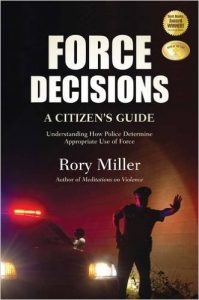
Thank you Rory Miller for planting the seed that led me to this training.

Personal thanks to Officer Dennis Burlingame for extending the invitation.
It was a game changer in many ways sir, thank you!
Kudos and special thanks also to Detectives Derek McGork and Mark Rusin, Officer Mike Musengo, Officer McReynolds and to all of the other officers that volunteered their personal time and specialized talents to share and demonstrate their skills, skills that are utilized to keep all of their sisters and brothers in blue safe.
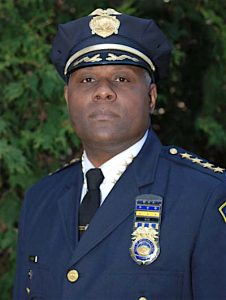
Lastly, to Chief Frank Fowler for supporting this concept and program and for inviting the public-at-large to attend and participate – hoping to change our futures! Chief, this is my end of the promise – to go forth and educate. I hope it meets with your approval and meets or perhaps exceeds your expectations.
“what we think we know vs. what the facts really are.”
Now we know… more. Let the understanding begin…
Tim Boehlert ©Copyright 2017
Defendublog.com
GLOSSARY:
Active aggression:
“a threat or overt act of an assault (through physical or verbal means) coupled with present ability to carry out the threat or assault which reasonably indicates that an assault or injury to any person is imminent.”
Active non-compliance:
“any physical acts against an officer that could reasonably defeat a lawful attempt by the officer to gain control.”
Alpha vs. Beta commands:
“Alpha commands are concise: “Stop playing.”
Beta commands are 1) easy to dismiss or 2) too difficult to comply with.”
Altered Mental Status (AMS):
“is a disruption in how your brain works that causes a change in behavior. This change can happen suddenly or over days. AMS ranges from slight confusion to total disorientation and increased sleepiness to coma.”
Case law:
“the law as established by the outcome of former cases.”
Custodial interrogation:
“In United States criminal law, a custodial interrogation (or, generally, custodial situation) is a situation in which the suspect’s freedom of movement is restrained, even if he is not under arrest.”
Deadly Physical Threat:
“imminent threat of death or serious physical injury.”
Demonstrative Bullet Theory: (FBI Study)
Fact-finding that dispels the myth: “one shot, one kill” through the demonstration of ballistics testing.
Duty To Act:
“The term Duty to Act is a legal term that defines an individual or organization’s legal requirement to take action to prevent harm to a person or the community as a whole.”
Emotionally Disturbed Person: (EDP)
“appears to be mentally ill or temporarily deranged and is conducting himself in a manner which a police officer reasonably believes is likely to result in serious injury to himself or others.”
Excited Delirium:
“Excited delirium is a controversial proposed condition that manifests as a combination of delirium, psychomotor agitation, anxiety, hallucinations, speech disturbances, disorientation, violent and bizarre behavior, insensitivity to pain, elevated body temperature, and superhuman strength.”
Founded suspicion:
Where an officer needs only to justify their actions by demonstrating one or more objective facts that would create reasonable suspicion.
High-crime area:
“High crime areas can be described as an extension of the more commonly discussed hot spots. Although there is no widely accepted definition of a hot spot, for the purposes of this paper, it is defined as a group of similar crimes committed by one or more individuals at locations within close proximity to one another (International Association of Crime Analysts, 2011).”
source: http://www.iaca.net/Publications/Whitepapers/iacawp_2013_02_high_crime_areas.pdf
Human Performance Factors:
Here are a few factors to consider: lack of communication, complacency, lack of knowledge, distraction, fatigue, lack of resources, pressure, lack of assertiveness, stress, lack of awareness.
Implicit Bias:
“Understood though not clearly or directly stated tendency to believe some ideas are better than others.”
Inattentional blindness:
“Inattentional blindness, also known as perceptual blindness, is a psychological lack of attention that is not associated with any vision defects or deficits. It may be further defined as the event in which an individual fails to recognize an unexpected stimulus that is in plain sight.”
‘In the moment’:
“totally, completely, 100% immersed in the situation at hand… with no care, worry or thought of anything else in your life/the lives of others.”
source: http://www.urbandictionary.com/define.php?term=In%20The%20Moment
Investigative action:
“any type of investigation, or lawsuit.”
Objectively Reasonable:
“In Graham v. Connor (1989), the U.S. Supreme Court answered these questions. The Supreme Court ruled that police use of force must be “objectively reasonable” — that an officer’s actions were reasonable in light of the facts and circumstances confronting him, without regard to his underlying intent or motivation.”
OODA Loop:
“The phrase OODA loop refers to the decision cycle of observe, orient, decide, and act, developed by military strategist and United States Air Force Colonel John Boyd. Boyd applied the concept to the combat operations process, often at the strategic level in military operations.”
Passive non-compliance:
“non-violent, does not pose an immediate threat to the officer or public.”
Pre-assault indicators:
“specific nonverbal signals communicated by perpetrators that suggest nefarious intent.” Jim Glennon, PoliceOne.com
https://www.policeone.com/police-products/training/articles/1660205-Pre-attack-indicators-Conscious-recognition-of-telegraphed-cues/
https://www.youtube.com/watch?v=xBoYhgz0hes
Pre-incident indicators:
“We get a signal prior to violence,” Gavin de Becker says. “There are pre-incident indicators. Things that happen before violence occurs.”
Procedural Justice Ideals:
“Procedural justice is the idea of fairness in the processes that resolve disputes and allocate resources.”
Reality Based Training:
“Reality Based Training is defined as any type of simulation training that prepares an individual for future performance through experiential learning.”
Selective Memory Distortion:
“Memory distortions occur when retrieval of memories are incorrect and information is remembered in a different way than what actually occurred. People reconstruct the past from a variety of sources and mental processes. These processes are far from perfect with individual differences, experiences, and differing perceptions influencing how we reconstruct previous events. Mental distortions are caused by cognitive processes that influence our memory function.”
source: http://www.alleydog.com/glossary/definition.php?term=Memory%20Distortions
Specific and articulable facts:
“The officer must have more than a hunch, or gut-feeling, to conduct an investigative detention and search. The legal standard requires officers to have a reasonable belief that is based on specific and articulable facts. Thus, the officer, in a court of law, must be able to describe in detail what caused their officer ears to perk up and alert them to criminal activity. Generally, some of these factors are (1) flight; (2) suspicious movement; (3) threats and attempts to resist; and (4) intoxication.”
source: http://www.zenlawfirm.com/Law-Blog/2011/August/What-Does-The-Phrase-Specific-And-Articulable-Fa.aspx
Standard reasonable cause:
“To have knowledge of facts which, although not amounting to direct knowledge, would cause a reasonable person, knowing the same facts, to reasonably conclude the same thing.”
Terry Stop:
“Involves detaining a person by a police on reasonable suspicion of criminal activity.”
Totality of circumstances:
“A totality of the circumstances standard suggests that there is no single deciding factor, that one must consider all the facts, the context, and conclude from the whole picture whether there is probable cause, or whether an alleged detention is really a detention, or whether a citizen acted under color of law.”
Unconscious bias:
“Unconscious bias refers to a bias that we are unaware of, and which happens outside of our control. It is a bias that happens automatically and is triggered by our brain making quick.”
Under color of employment:
“In general, color of law is a broad term used to describe when someone is working in their official capacity for a governmental agency. Anyone who works for a governmental agency is potentially subject to a section 1983 civil rights violation suit.”
Use of Force continuum:
“A use of force continuum is a standard that provides law enforcement officers and civilians with guidelines as to how much force may be used against a resisting subject in a given situation.” In some ways, it is similar to the U.S. military’s escalation of force (EOF).”
Use of Force Model:
UOF models were developed in 1991 by Dr. Franklin Graves, FLETC & Professor Gregory J. Connor, University of Illinois Police Training Institute.
“These policies describe a escalating series of actions an officer may take to resolve a situation. This continuum generally has many levels, and officers are instructed to respond with a level of force appropriate to the situation at hand, acknowledging that the officer may move from one part of the continuum to another in a matter of seconds.”
REFERENCES:
[1]Terry Stops
https://en.wikipedia.org/wiki/Terry_stop
[2]Terry vs. Ohio, 392 U.S. 1 (1968)
https://supreme.justia.com/cases/federal/us/392/1/case.html
[3]People vs. Debour, 40 NY2d 210 (1976)
http://www.courts.state.ny.us/reporter/archives/p_debour.htm
http://nassau18b.org/search_seizure/Debours%20Four%20Levels.pdf
https://fiskelaw.org/2013/03/05/street-encounters-with-police-debour-and-beyond/
http://www.nysba.org/Sections/Criminal_Justice/pdfs/Police_Encounters_with_the_Public.html
https://kb.osu.edu/dspace/bitstream/handle/1811/64138/OSLJ_V38N2_0409.pdf
[4]People v Cantor, 36 NY 2d 106, 112-113 (1957)
https://casetext.com/case/people-v-cantor-9
http://www.leagle.com/decision/197514236NY2d106_1128/PEOPLE%20v.%20CANTOR
[5]People v Brown 115 AD3d (1st Dept. 2014)
http://law.justia.com/cases/new-york/court-of-appeals/2015/36.html
http://njdc.info/wp-content/uploads/2014/09/Case-Updates-Jan.-2013-mid-July-2014.pdf
http://www.nyscala.com/wp-content/uploads/2015/09/Search-and-Seizure.pdf
[6]People v Thomas 115 AD3d (1st Dept. 2014)
http://www.leagle.com/decision/In%20NYCO%2020140116359/PEOPLE%20v.%20THOMAS
https://c.ymcdn.com/sites/www.nysda.org/resource/resmgr/Files/NY_Lesser_Included_Offenses_.pdf
[7]People v Chestnut 51 NY2d 14 (1980)
https://casetext.com/case/people-v-chestnut-2
http://scholarship.law.stjohns.edu/cgi/viewcontent.cgi?article=2278&context=lawreview
[8]Scott v Harris 550 U.S. 372, 2007
https://www.supremecourt.gov/opinions/06pdf/05-1631.pdf
https://vimeo.com/46603634
http://www3.nd.edu/~ndlrev/archive_public/85ndlr4/Yowell.pdf
[9]Fourth Amendment
https://en.wikipedia.org/wiki/Fourth_Amendment_to_the_United_States_Constitution
[10]Brendlin v California 51 U.S. 249
https://www.supremecourt.gov/opinions/06pdf/06-8120.pdf
https://www.youtube.com/watch?v=0zCAdoy4q9s
http://www.americanbar.org/content/dam/aba/publishing/preview/publiced_preview_briefs_pdfs_06_07_06_8120_Petitioner.authcheckdam.pdf
[11]Article 35.30
http://ypdcrime.com/penal.law/article35.htm
http://codes.findlaw.com/ny/penal-law/pen-sect-35-30.html
[12]Burchett v Kiefer 310 F. 3d 937- 6th Circuit
http://www.freelawreporter.org/flr3d/f3d/310/310.F3d.937.01-3301.html
[13]Johnson v Glick
https://casetext.com/case/johnson-v-glick
http://users.soc.umn.edu/~samaha/cj6e/ch06_you_decide_excessive_force.htm
http://scholarship.law.duke.edu/cgi/viewcontent.cgi?article=2997&context=dljhttp://www.lawenforcementservices.biz/Law_Enforcement_Services,_LLC/Additional_Police_Training_files/Use%20of%20Force.pdf
[14]Tennessee v Garner
https://supreme.justia.com/cases/federal/us/471/1/case.html
https://www.fletc.gov/sites/default/files/PartIIIDeadlyForce-TennvGarner.pdf
[15]Graham v Connor
https://supreme.justia.com/cases/federal/us/490/386/
http://caselaw.findlaw.com/us-supreme-court/490/386.html
https://www.fletc.gov/sites/default/files/PartIGrahamvConnor.pdf
http://www.policemag.com/channel/patrol/articles/2014/10/understanding-graham-v-connor.aspx
[16]Objective Test: Reasonable Officer
https://supreme.justia.com/cases/federal/us/490/386/
http://www.policemag.com/channel/patrol/articles/2014/10/understanding-graham-v-connor.aspx
https://www.fletc.gov/sites/default/files/PartIGrahamvConnor.pdf
http://www.mapunion.org/PDFs/Graham.pdf
[17]Shreveport, LA video 03/15/2003 – justified shoot
https://www.youtube.com/watch?v=vlmq2BAEZik
https://casetext.com/case/hudspeth-v-city-of-shreveport
http://dailycaller.com/2016/09/23/how-two-video-angles-can-completely-change-the-story-of-cops-killing-a-suspect-video/
https://www.youtube.com/watch?v=aVQXvbNrf2A
[18]Demonstrative Bullet Theory (FBI study)
https://leb.fbi.gov/2004-pdfs/leb-october-2004
[19]Daniel J. Simons 1999
http://www.chabris.com/Simons1999.pdf
https://www.youtube.com/watch?v=IGQmdoK_ZfY
[20]West Palm Beach (COPS) 2001-04(?)
http://www.aele.org/law/2009all01/lewis-wpb.html
http://www.csmonitor.com/USA/Justice/2010/0222/Supreme-Court-rejects-suit-that-argued-excessive-force-by-police
https://www.justnet.org/pdf/exds-panel-report-final.pdf
[21]Appleton Police 061509 video – EDP (Emotionally Disturbed Person)
http://www.ipicd.com/Supplemental/Articles%20and%20Studies/Videos/Synopsis–Jefferson%20Street%20Video.pdf
https://www.youtube.com/watch?v=HfEepVOQrpE
RESOURCES (for further research):
Albrecht, Steve
Surviving Street Patrol: The Officer’s Guide To Safe And Effective Policing
Tactical Perfection For Street Cops: Survival Tactics For Field Contacts, Dangerous Calls And Special Arrests
Street Work: The Way To Police Officer Safety And Survival
Patrol Cop: Better, Safer, Smarter Field Work in Law Enforcement
Artwohl, Alexis A., Dr./Christensen, Loren W.
Deadly Force Encounters: What Cops Need To Know to Mentally and Physically Prepare for and Survive a Gunfight
Asken, Michael J.
Mindsighting: Mental Toughness For Police Officers In High Stress Situations
Brooks, Pierce R.
“…officer down, code three.”
Christensen, Loren W.
Skid Row Beat: A Street Cop’s Walk On The Wild Side
Riot: A Behind-The-Barricades Tour of Mobs, Riot Cops, and the Chaos of Crowd Violence
The Mental Edge, Revised
The Way of the Warrior: The Violent Side
Davis, Kevin R.
Use Of Force Investigations: A Manual For Law Enforcement
de Becker, Gavin
The Gift Of Fear And Other Survival Signals That Protect Us From Violence
Ekman, Paul/Friesen, Wallace V.
Unmasking The Face – A Guide To Recognizing Emotions From Facial Expressions
ForceScience.org
Giduck, John/Maj. Joseph M. Bail, Jr.
Shooter Down: Virginia Tech Massacre
Glennon, Lt. Jim
Arresting Communication: Essential Interaction Skills For Law Enforcement
Grossman, Dave, Lt. Col.
On Killing: The Psychological Cost of Learning to Kill in War and Society
Grossman, Dave, Lt. Col./Christensen, Loren W.
On Combat: The Psychology And Physiology Of Deadly Conflict In War And In Peace 3rd Edition
Gundersen, D.F./Hopper, Robert
Communication and Law Enforcement
Hare, Robert D., PhD.
Without Conscience: The Disturbing World Of The Psychopaths Among Us
Klein, Gary
Seeing What Others Don’t – The Remarkable Ways We Gain Insights
Koga, Robert K./Pelkey, William L., Ph.D.
Controlling Force: A Primer For Law Enforcement Third Edition
Lagarde, Col. Louis A.
Gunshot Injuries: How They Are Inflicted, Their Complications and Treatment
MacYoung, Marc
In The Name of Self-Defense: When It’s Worth It, What It Costs
Matsumoto, David/Frank, Mark G./Hwang, Hyisung
Nonverbal Communication: Science and Applications
Miller, Rory
Conflict Communications: A New Paradigm in Conscious Communications
Violence: A Writer’s Guide Second Edition
The Logic of Violence: Think Like A Criminal DVD
Facing Violence: Preparing For The Unexpected – Ethically, Emotionally, Physically, Without Going To Prison
Meditations On Violence: A Comparison Of Martial Arts Training & Real World Violence
Force Decisions: A Citizen’s Guide to Understanding How Police Determine Appropriate Use of Force
Miller, Rory/Kane, Lawrence A.
Scaling Force: Dynamic Decision-Making Under Threat of Violence
Morris, Desmond
Bodytalk: The Meaning Of Human Gestures
People Watching: The Desmond Morris Guide To Body Language
Mroz, Ralph
Tactical Defensive Training For Real-Life Encounters: Practical Self-Preservation For Law Enforcement
Murray, Kenneth R.
Training At The Speed of Life: Volume One The Definitive Textbook for Military and Law Enforcement Reality Based Training w/CD
Navarro, Joe
Body Language Essentials
What Every BODY is Saying (First Edition)
Clues To Deceit – A Practical List
Dangerous Personalities
Remsberg, Charles
Tactics for Criminal Patrol: Vehicle Stops, Drug Discovery & Officer Survival
The Tactical Edge: Surviving High-Risk Patrol
Street Survival: Tactics For Armed Encounters
Blood Lessons: What Cops Learn From Life-Or-Death Encounters
Siddle, Bruce K.
Sharpening The Warrior’s Edge: The Psychology & Science of Training
Thompson, George J.
Verbal Judo: Redirecting Behavior With Words
Verbal Judo: Words as a Force Option
Van Horne, Patrick/Riley, Jason A.
Left of Bang: How the Marine Corps’ Combat Hunter Program Can Save Your Life
FREE Download here: >> A_Duty_to_Act






